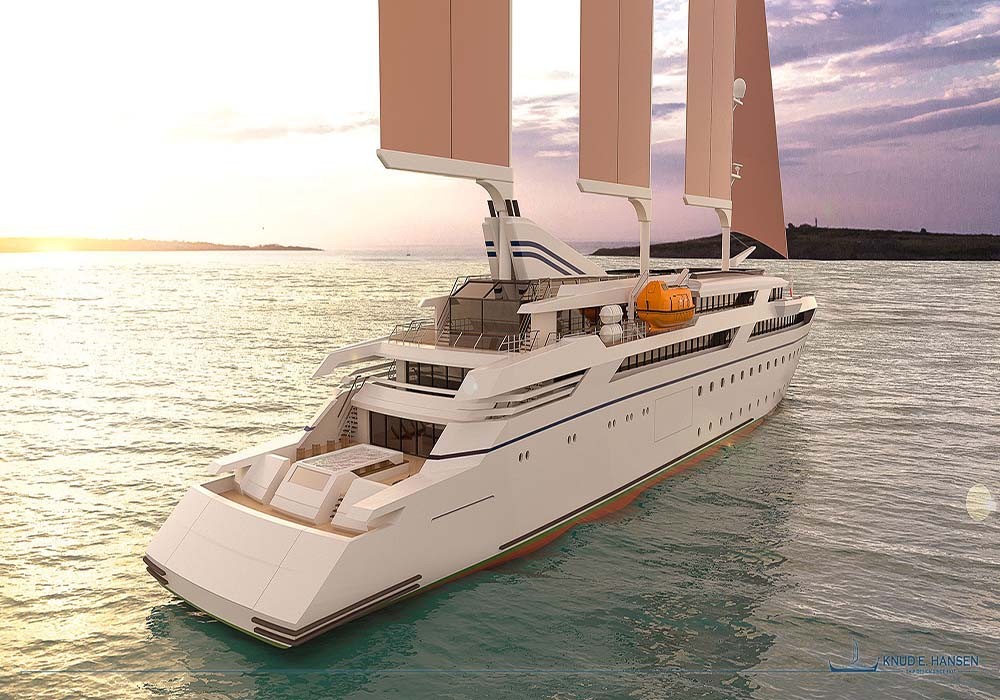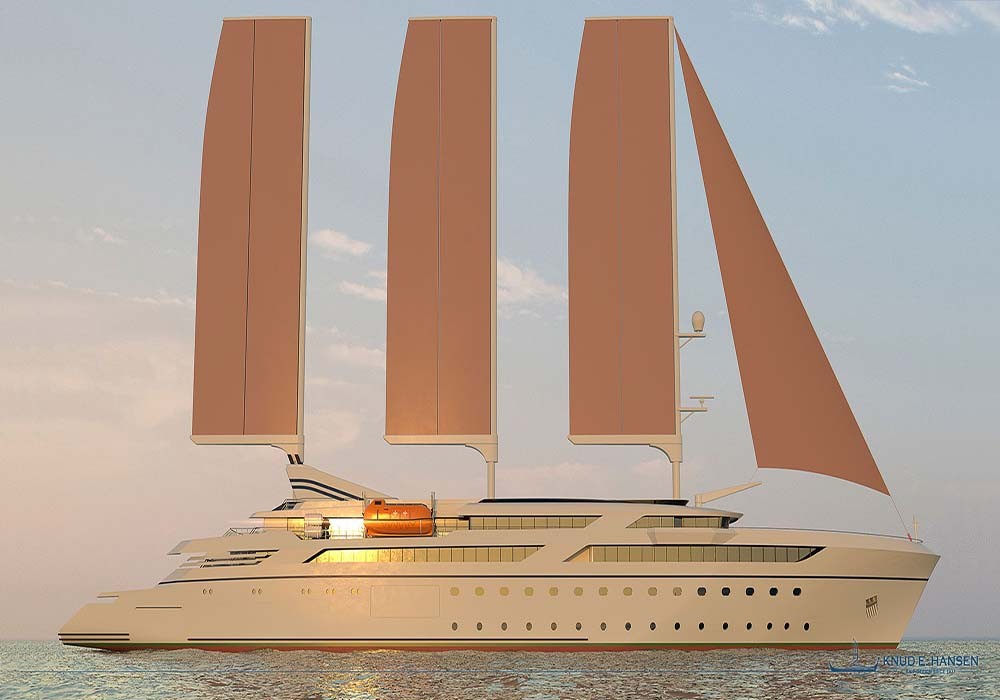Like most forms of major transport, cruise ships have a sizeable environmental impact. Nitrogen oxide emission, sulphur emissions, human sewage, rubbish and chemical waste… it’s estimated that cruise ship passengers triple their normal carbon footprint while at sea.
One ship designer believes it has come up with a solution. Denmark-based Knud E. Hansen has unveiled designs for a sail-assisted cruise vessel which can operate on wind power as well as diesel engines and electric motors. 110 metres long, it would accommodate up to 100 passengers.
Although, at this stage, the design is only a concept, the designers told Chart Hub that, once ordered, the vessel, called Wind Cruise Vessel, could be constructed within two years. They hope it will appeal to the adventure-cruise market, and passengers who prefer “a more intimate cruise experience”.
“The higher end of the market prefers smaller ships where passengers can escape the crowds typically found on the large cruise lines,” the company states. “Furthermore, the modest length and shallow draft [just 4.7 metres] of this vessel allow it to anchor in small harbours, away from the throngs of tourists found in busier ports.”
The ship’s green credentials are sure to appeal to environmentally aware passengers. “In favourable wind conditions, the vessel can run only on sails,” explained Camilla Nissen who works at Knud E. Hansen. The vessel also features a battery bank which could power it in ports and specially protected areas.
“There will always be a market for people who wants to feel close to the nature and the elements,” Nissen adds. “Such a vessel makes it possible even to enter highly sensitive environmental areas.”

Above: 100 metre adventure Wind Cruise Vessel
The rig of Wind Cruise Vessel is designed by German yacht-builder Detlev Loll Ingenieurburo. It would comprise three free-standing masts, each with a fully-battened main sail with adjustable trailing-edge flaps to optimise lift. The computer-operated sails would cover a total area of more than 1,900 square metres. In addition there would be four diesel-electric engines, allowing the vessel to cruise at 15 knots in most conditions.

Above: 100 metre adventure Wind Cruise Vessel
The accommodation decks would include 48 passenger cabins, all with ocean views, and many with private balconies. In the hull there would be a sea lounge with underwater views of the ocean, while on the second deck a garage for rigid inflatables, jet skis, diving gear and other recreational equipment which could be launched via shell doors on either side of the ship. There would be a further four decks featuring facilities such as a swim platform, a restaurant a bar, a library and a sun deck.
The idea of taking cruises on sailing ships is nothing new. Operators such as Windstar Cruises, Ponant, Sea Cloud Cruises, Variety Cruises and Star Clippers all offer masted yachts with room for large numbers of passengers.
The latter owns a beautiful 135-metre, fully rigged tall ship called Royal Clipper which, it claims, is the largest true sailing ship left in operation. It has five masts, 42 sails and a total sail area of over 5,200 square metres.
There’s room for 227 passengers. Presumably they feel very little guilt about their carbon footprint.
